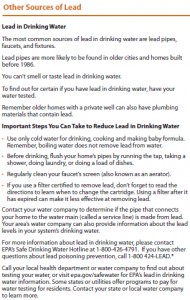Tom Neltner, J.D., Chemicals Policy Director, and Lindsay McCormick, Project Manager
[pullquote]
The Cornell/EDF study confirmed that potential buyers or renters report being much more willing to take action to replace LSLs when told they have one regardless of disclosure style. However, water testing information that shows levels below EPA’s lead action level may underestimate risk and undermine action on LSLs.
[/pullquote]
Today, EDF and collaborators at Cornell published a new study that provides insight into how disclosure policies can impact potential home-buyer and renter behavior. This effort builds on a report EDF published in 2017 grading state housing disclosure policies according to their ability to help homebuyers make informed decisions about lead service lines (LSLs) before they sign a sales contract. LSLs are pipes that connect homes to the water mains under the street and are a major source of lead in drinking water. Four states — Connecticut, Delaware, New York, and Pennsylvania — and Washington, DC scored an A-. Twenty-one states scored a D or F. The remaining 25 states scored a B or C.
Our analysis was based on a presumption that if potential homeowners are told that a home has an LSL, many would negotiate with the property owner for its removal, whether by having the seller replace it or building the cost into the mortgage to fund the buyer’s replacement. This was a reasonable presumption that underlies why sellers are required to disclose property defects and environmental hazards in many states.
However, we were interested in testing that presumption and exploring how potential homebuyers and renters might respond differently based on how the information is disclosed by a property owner or home inspector. Our objective was to evaluate disclosure styles to assess if the different styles influenced respondents’ perceived risk of the LSL in a home and willingness to act. To conduct the survey, we partnered with Jeff Niederdeppe and Hang Lu of Cornell University’s Department of Communications who recruited 2,205 participants online and gave them one of three scenarios to consider and advised them it would cost $1,000-5,000 to replace the LSL. See Figure 1 below.











